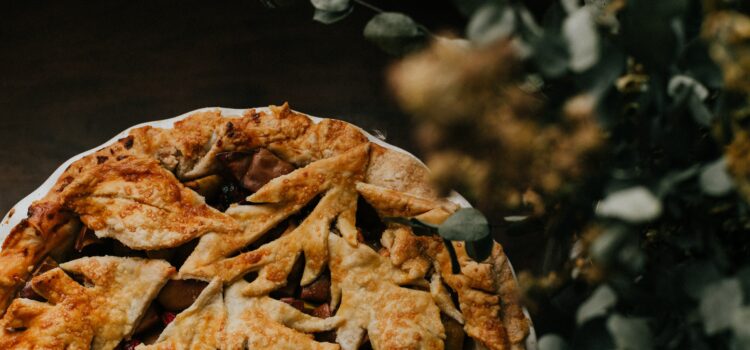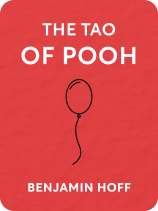

This article is an excerpt from the Shortform book guide to "The Tao of Pooh" by Benjamin Hoff. Shortform has the world's best summaries and analyses of books you should be reading.
Like this article? Sign up for a free trial here .
What is the Cottleston Pie Principle? How does Cottleston Pie represent Taoism in The Tao of Pooh?
Cottleston Pie is a song from Winnie-the-Pooh. The verses of the song help illustrate the principle of Inner Nature from Taoism.
Keep reading to learn more about the Cottleston Pie Principle from The Tao of Pooh.
The Cottleston Pie Principle of Taoism
In the world of Pooh, the Cottleston Pie Principle represents the Taoist ideal of Inner Nature, which encompasses the unique aspects inside everything. Everyone and everything has characteristics inside that differentiate them from others, similar to the way that no two snowflakes are the same. Inner Nature is difficult to comprehend through language, but the ideas are more approachable through the meaning held within Pooh’s song Cottleston Pie.
(Shortform note: Although the song is much longer, for the sake of understanding the principle, we’ll only cover the relevant lines.)
Stanza 1—“A fly can’t bird, but a bird can fly.”
Stanza 2—“A fish can’t whistle and neither can I.”
Stanza 3—“Why does a chicken, I don’t know why.”
The three lines translate into the three main principles of Cottleston Pie.
1. Allow things to be what they are.
Everything on earth, including people, have their own purpose and place in the world. When you listen to your Inner Nature, you’re always where you’re supposed to be. But people often try to fit a square peg in a round hole. When you ignore the power of your purpose, you end up where you don’t belong. Think of all the people stuck in jobs, marriages, and environments that don’t serve them. When you understand who you are, you can find your specific brand of beauty and authenticity that has value in the right circumstances.
A story from the writings of Chuang-tse, the second major writer on Taoism, exemplifies this principle:
A man complains that a large gnarled tree on his property is not suitable for lumber or any use because of its shape and thickness. In his eyes, the tree is useless. But Chuang-tse suggests that the tree is only useless to someone who sees it only as a means for wood to be used elsewhere. This person is missing the benefits the tree provides simply by being a large tree. The large size makes the tree useful for shade. The dense branches could provide shelter from a storm. The intricate shape can be gazed upon for its beauty. The tree is only useless if someone wants it to be.
2. Everyone has limitations.
Your limitations or weaknesses can be blessings when you acknowledge them. When you recognize and understand your limitations, you can work with them in the right way to make them beneficial and turn them into strengths. In contrast, ignoring limitations creates trouble for you and everyone around you. When you force yourself in directions or situations you aren’t designed for, you disrupt the natural order of life, which has ripple effects.
An example from the world of Pooh is Tigger’s assertion that tiggers are capable of anything. Tigger tells Roo that he can climb trees better than Pooh, and to demonstrate, he climbs to the top of a tall tree. But once in the tree, he is unable to come down and gets stuck. Everyone else must come and risk their safety to help Tigger get down from the tree.
Acknowledging limitations doesn’t mean you aren’t capable of rising above them. But you must be realistic about what you have to start with. For instance, if you are physically weak, you can grow stronger through any number of activities. But you must accept the present limitations of your muscles to know the right path to move down.
The Chinese have a saying: “One disease, long life. No disease, short life.” Translated, this saying means that those willing to acknowledge their ailments will take care of themselves, whereas those unwilling to admit that anything is wrong won’t and will perish.
3. Some things cannot be known.
There are some aspects of life that simply have no explanations that are discernable. Yet, scholars and scientists seek to find answers and labels for everything. And when something about human nature or the world is revealed to have no discernable answer, they call it “instinct.”
You do not need to explain every phenomenon in the universe. You don’t need to ask superfluous questions and force empty explanations. You simply need to understand the Inner Nature of everything and be willing to trust that things are as they are for a reason.

———End of Preview———
Like what you just read? Read the rest of the world's best book summary and analysis of Benjamin Hoff's "The Tao of Pooh" at Shortform .
Here's what you'll find in our full The Tao of Pooh summary :
- How Winnie-the-Pooh perfectly models the principles of Taoism
- The 6 principles of Taoism reflected in Pooh's adventures
- How to become Winnie-the-Pooh and unlock a magic inside of you






